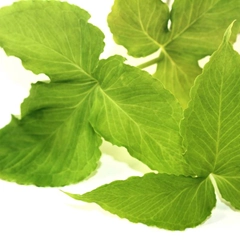Neurogenic vomiting according to Chinese Medicine
The information provided here is not a replacement for a doctor. You shouldn't use it for the purpose of self-diagnosing or self-medicating but rather so you can have a more informed discussion with a professional TCM practitioner.
In Chinese Medicine, neurogenic vomiting is sometimes associated with Qi-Phlegm, a so-called "patterns of disharmony". Chinese Medicine sees the body as a system, not a sum of isolated parts. A "pattern" is when the system's harmony is disrupted. It is not equivalent to the Western concept of "disease" because both concepts arise from totally different ways of seeing the human body.
To understand whether someone's neurogenic vomiting might be caused by the pattern Qi-Phlegm, one needs to look for signs and symptoms associated with the pattern beyond what one might typically experience from neurogenic vomiting alone. Indeed if neurogenic vomiting is caused by Qi-Phlegm, patients also experience symptoms such as difficulty swallowing, feeling of a lump in the throat which comes and goes and stuffiness of chest and diaphragm. Similarly, patients with Qi-Phlegm typically exhibit slippery (Hua) or wiry (Xian) pulses as well as a tongue with thick white coating.
We've listed below a more detailed description of Qi-Phlegm so that you can have a better understanding of where neurogenic vomiting might find its root according to Chinese Medicine.
Once identified, patterns are often treated using herbal formulas. Drinking herbal infusions is the most common remedy in Chinese Medicine, together with acupuncture. Here we detail below Ban Xia Hou Pu Tang, a formula that can help treat Qi-Phlegm.
Qi-Phlegm, a "pattern of disharmony" associated with neurogenic vomiting

Crow-Dipper Rhizomes (Ban Xia) is the key herb for Ban Xia Hou Pu Tang, a formula used for Qi-Phlegm
Qi-Phlegm
Pulse type(s): Slippery (Hua), Wiry (Xian)
Tongue coating: Thick white coating
Recommended herbal formula: Ban Xia Hou Pu Tang
Symptoms: Difficulty swallowing Stuffiness of chest and diaphragm Feeling of a lump in the throat which comes and goes
Neurogenic vomiting might be due to Qi-Phlegm if the condition is paired with typical pattern symptoms such as difficulty swallowing, feeling of a lump in the throat which comes and goes and stuffiness of chest and diaphragm. Similarly, patients with Qi-Phlegm typically exhibit slippery (Hua) or wiry (Xian) pulses as well as a tongue with thick white coating.
Ban Xia Hou Pu Tang, a herbal formula that might help with neurogenic vomiting



The top herbs in Ban Xia Hou Pu Tang are Crow-Dipper Rhizomes (Ban Xia), Houpu Magnolia Bark (Hou Pu) and Poria-Cocos Mushrooms (Fu Ling)
Ban Xia Hou Pu Tang
Source date: 220 AD
Number of ingredients: 5 herbs
Key actions: Regulates the flow of Qi, treats esophageal spasm. Clears Phlegm.
Why might Ban Xia Hou Pu Tang help with neurogenic vomiting?
Because it is a formula often recommended to help treat Qi-Phlegm, a pattern sometimes associated with neurogenic vomiting. If it looks like you might suffer from Qi-Phlegm, this formula might help (although please seek confirmation with a professional practitioner beforehand).
Symptoms related to neurogenic vomiting
Difficulty swallowing Feeling of a lump in the throat which comes and goes Stuffiness of chest and diaphragm

